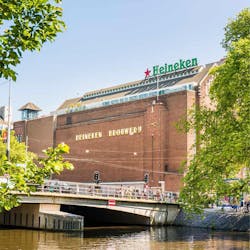Heineken’s Event-Driven Connectivity Strategy
We all hear a lot about industry’s digital transformation and connectivity goals and plans around Industrial Internet of Things or Industry 4.0 initiatives. Typically, these stories focus on one technology or a small group of them that enable a particular aspect of digital connectivity to address specific operational improvements. Heineken’s event-driven connectivity strategy is more far reaching.
As one of the world’s largest brewers, operating across 190 countries, Heineken is a household name brand. To ensure the company’s operational adaptability amid ever-changing global market demands, Heineken’s Digital & Technology organization needed to integrate thousands of disparate applications across the company’s payments, logistics, inventory management, and production operations, while also connecting dozens of separate operating companies, some of which still relied on local or legacy business systems.
Guus Groeneweg, Heineken’s product owner for digital integration, says this connectivity plan required “providing all internal and external customers with real-time access to data provided through asset integration, and ensuring the integration processes used would work effectively, consistently, and without disruption.”
Addressing these data flow issues led Heineken to adopt an event-driven approach to integration. Groeneweg says this method supports the company’s legacy integration and API management technologies with “a dynamic and robust event-driven architecture layer that delivers data from external parties, prevents data loss, mitigates system failures, and guarantees business continuity in the case of a cloud connection outage.”
Project scope
To understand the scope of this connectivity project, it’s important to realize that Heineken runs more than 3,500 applications globally, connecting them with more than 5,000 interfaces. ERP systems in use across the company include SAP, Oracle’s JD Edwards, and Microsoft Dynamics, as well as the Hybris and Virto e-commerce platforms, Salesforce customer relationship management, and various manufacturing execution and invoicing systems.“We are also leveraging event-driven integration to increase the efficiency of our application development process. With an event broker in the mix, our app teams can focus on designing great apps and not worry about the messaging or event streaming infrastructure,” Groeneweg says.
This approach enabled all required integration patterns to be established through a limited set of integration platforms—from interfaces between local systems in Vietnam up to interfaces from global ERP (enterprise resources planning) systems to local CRM (customer relationship management) systems.
Publish/subscribe data brokers
The broker approach noted by Groeneweg follows the publish/subscribe communications method used by MQTT and OPC UA. For this, Heineken uses Solace PubSub+ Event Brokers to underpin its integration. This broker handles all the translations and supports a number of open standard protocols and APIs including MQTT, AMQP, JMS, WebSocket, and HTTP for request-reply communication patterns.According to Solace, this enables the connection of a wide variety of apps and technologies to the "event mesh" (a network of event brokers), meaning that developers don't have to worry about how the disparate apps that leverage different APIs and protocols will communicate.
Groeneweg adds that, with its new event-driven system in place, Heineken can now deploy scalable “plug-and-play” technologies quickly to take advantage of timely business insights at scale. To explain this, Groeneweg offers an example involving the introduction of a new global invoice management application. Before the implementation of Heineken’s event-driven system, multiple point-to-point integrations would need to be built to embed the new application into the company’s IT landscape. “We would have to connect it to at least 20 applications to get master data, ERP data, customer data, etc.,” says Groeneweg. “With the event-driven approach, we just point the chatbot to the right topics and queues where the data is already available from all the source systems it needs to access. No integration work is required at all.”
Groeenweg says this approach can be used to implement a new MES system or a new packaging line.
The chatbot Groeneweg refers to is a user interface in Microsoft Teams that any employee within Heineken can use. In addition to connecting employees, this chatbot can be used to request, for example, the last invoices from a system integrator. Answers provided by the chatbot are based on data generated from the event queues, rather than a direct point-to-point connection to one application.
About the Author
David Greenfield, editor in chief
Editor in Chief

Leaders relevant to this article:



